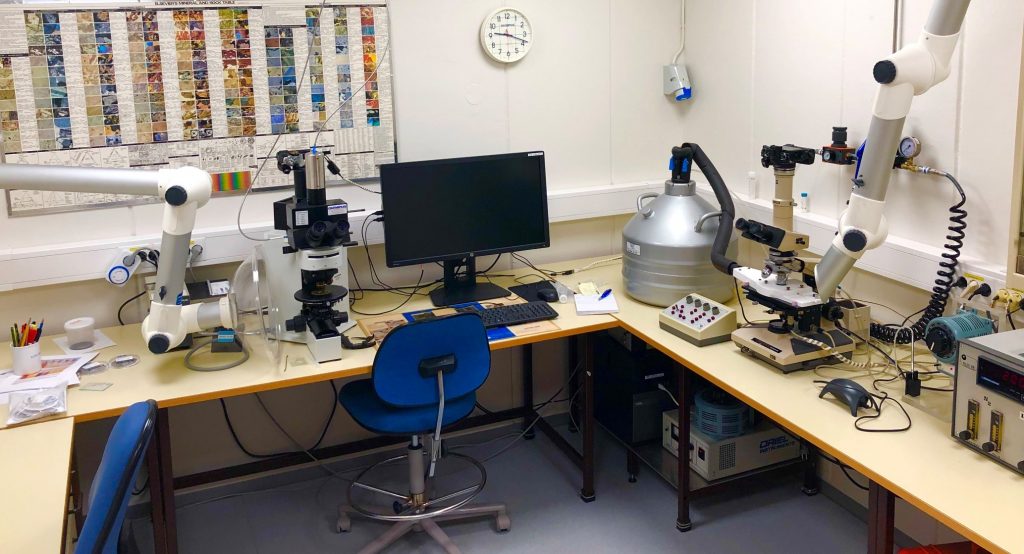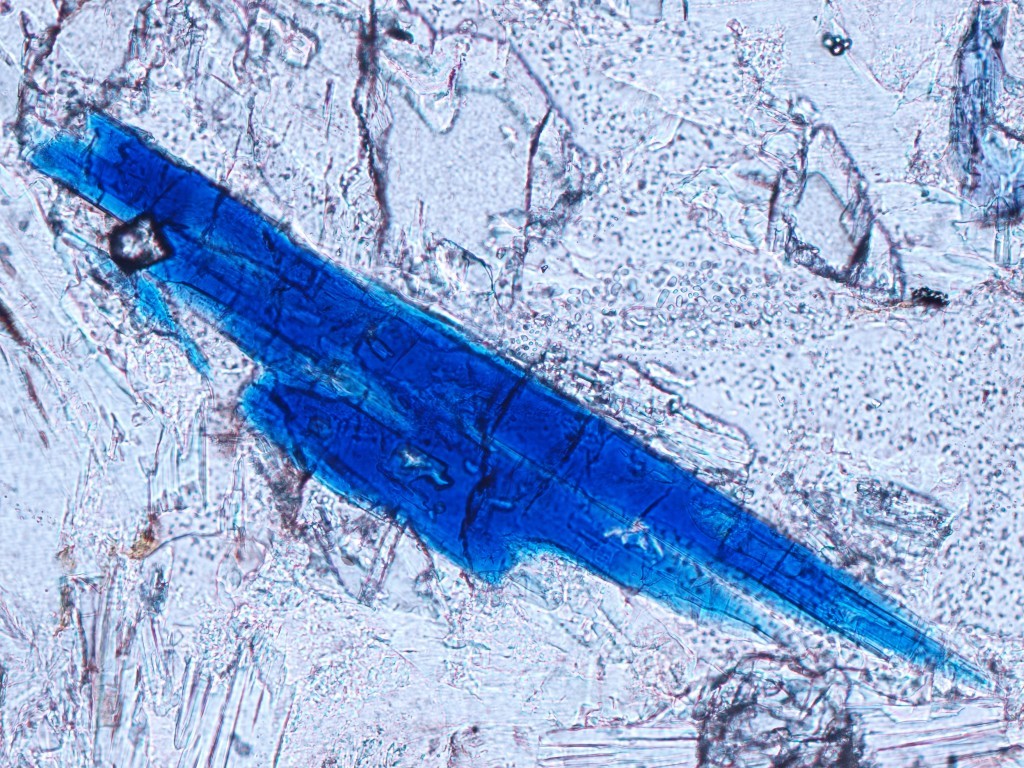Optical Microscopy at IFE
IFE’s Optical microscopy laboratory has recently made an important impact in the environmental air quality monitoring, with NILU as the most important industry partner, where provenances of airborne mineral dust particles now are deciphered routinely.
We provide the following state-of-the-art options based on custom OLYMPUS BX-60 and Microthermometric OLYMPUS BH-2 systems.
Examples of images obtained from the BX-60 system at IFE
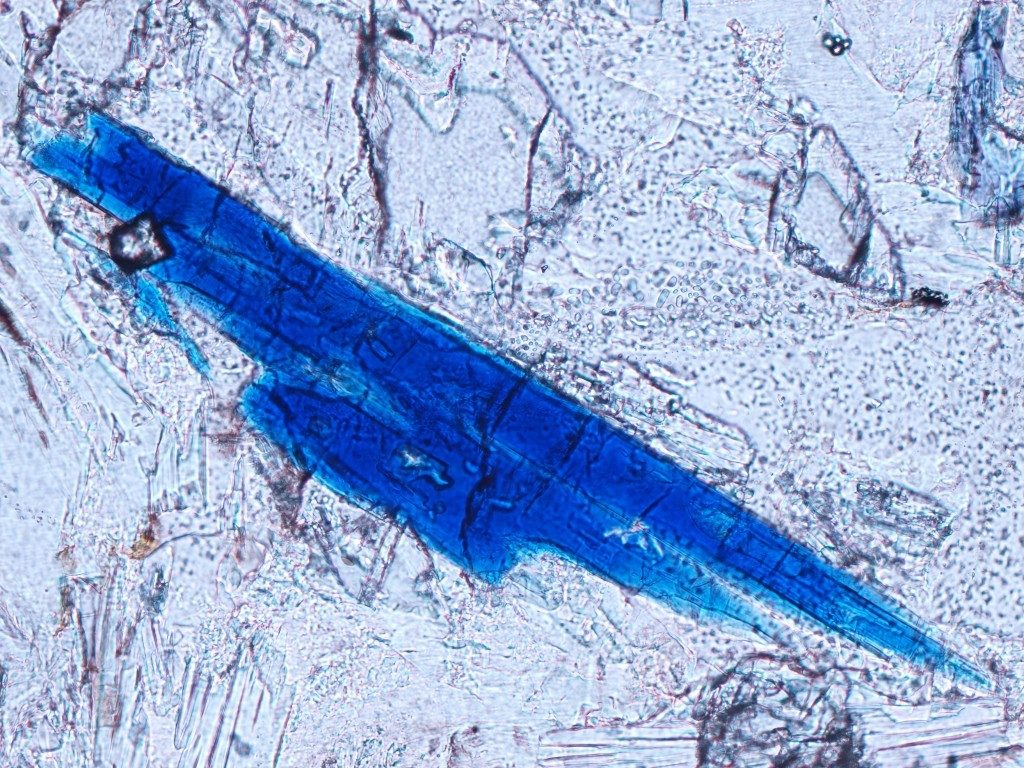
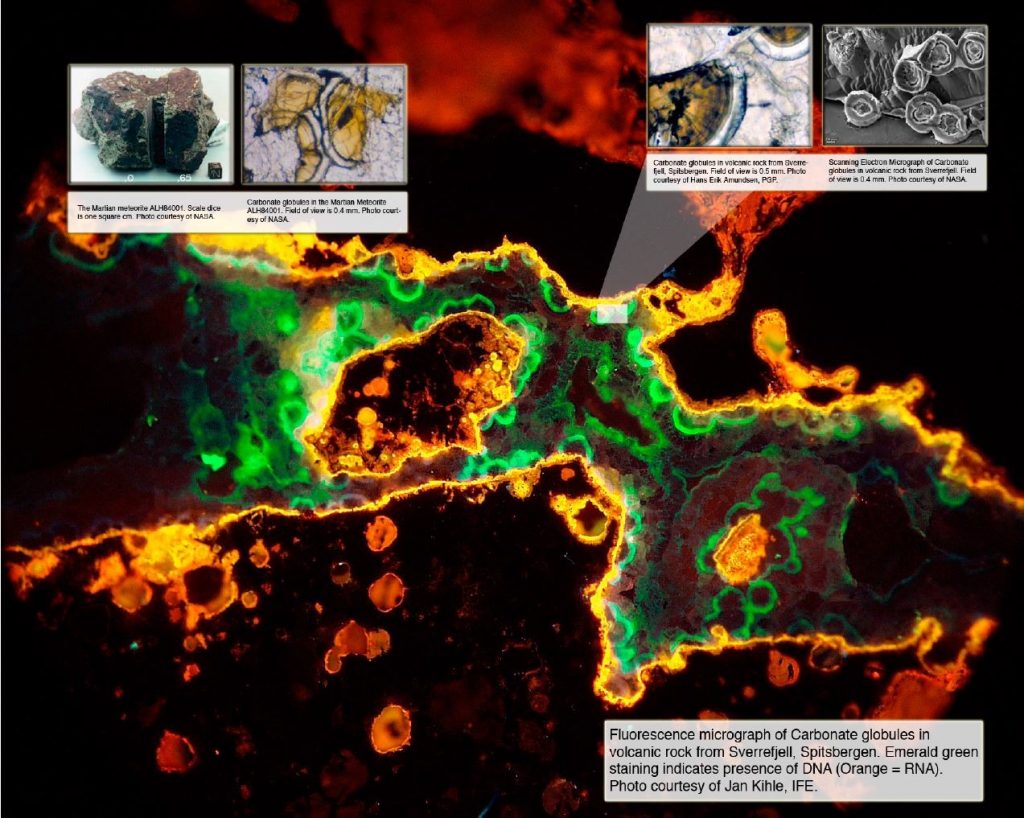
BX-60Light sources:
- transmitted white light
- reflected white light
- polarized light
- 365 nm irradiation for fluorescence investigations
- 405 nm irradiation for fluorescence investigations
Olympus Apochromat and Planachromat Optics:
- 5x
- 4x
- 10x
- 20x
- 40x
- 50x
- 100x
Microphotography and Video options:
- Up to 80 Mb still images
- 4K Video recordings
Spectroscopy options:
Fluorescence emission spectroscopy 370-1000 nm, minimum spot size 20µm.
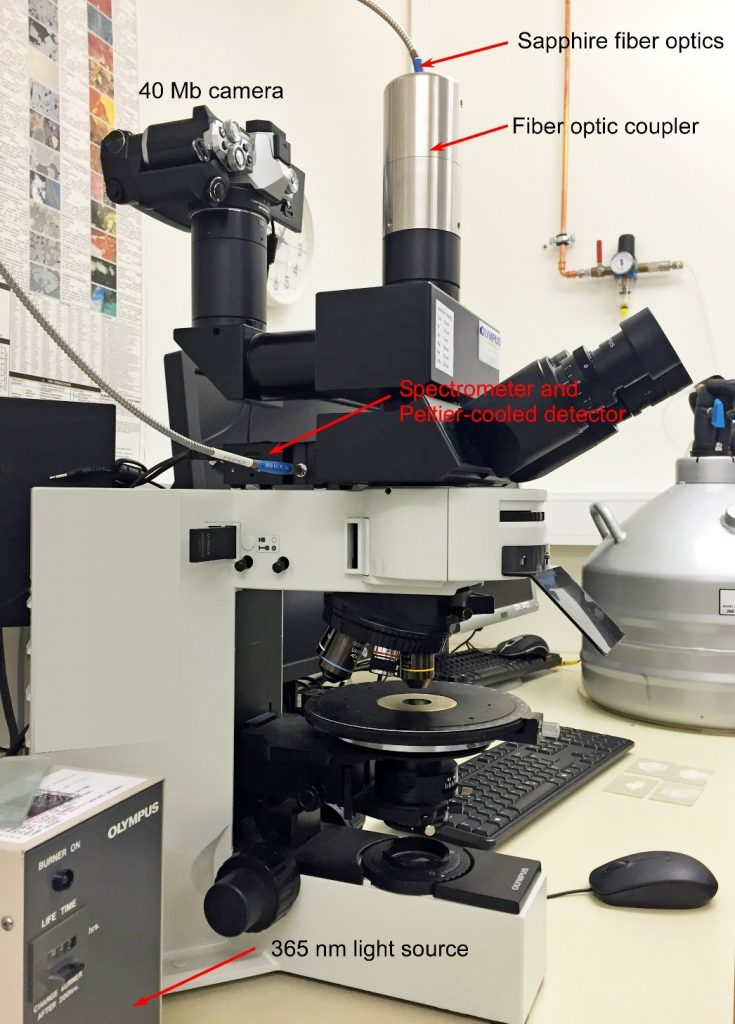
BH-2
Light sources:
- transmitted white light
- Polarized light
Olympus Apochromat and Planachromat Optics, with optical correction collar 0-1.4mm:
- 20x
- 40x
Microphotography and Video options:
- Up to 80 Mb still images
- 4K Video recordings
Spectroscopy options:
- None.
Sample Heating/Freezing options:
- +350 deg C
- -100 dec C
